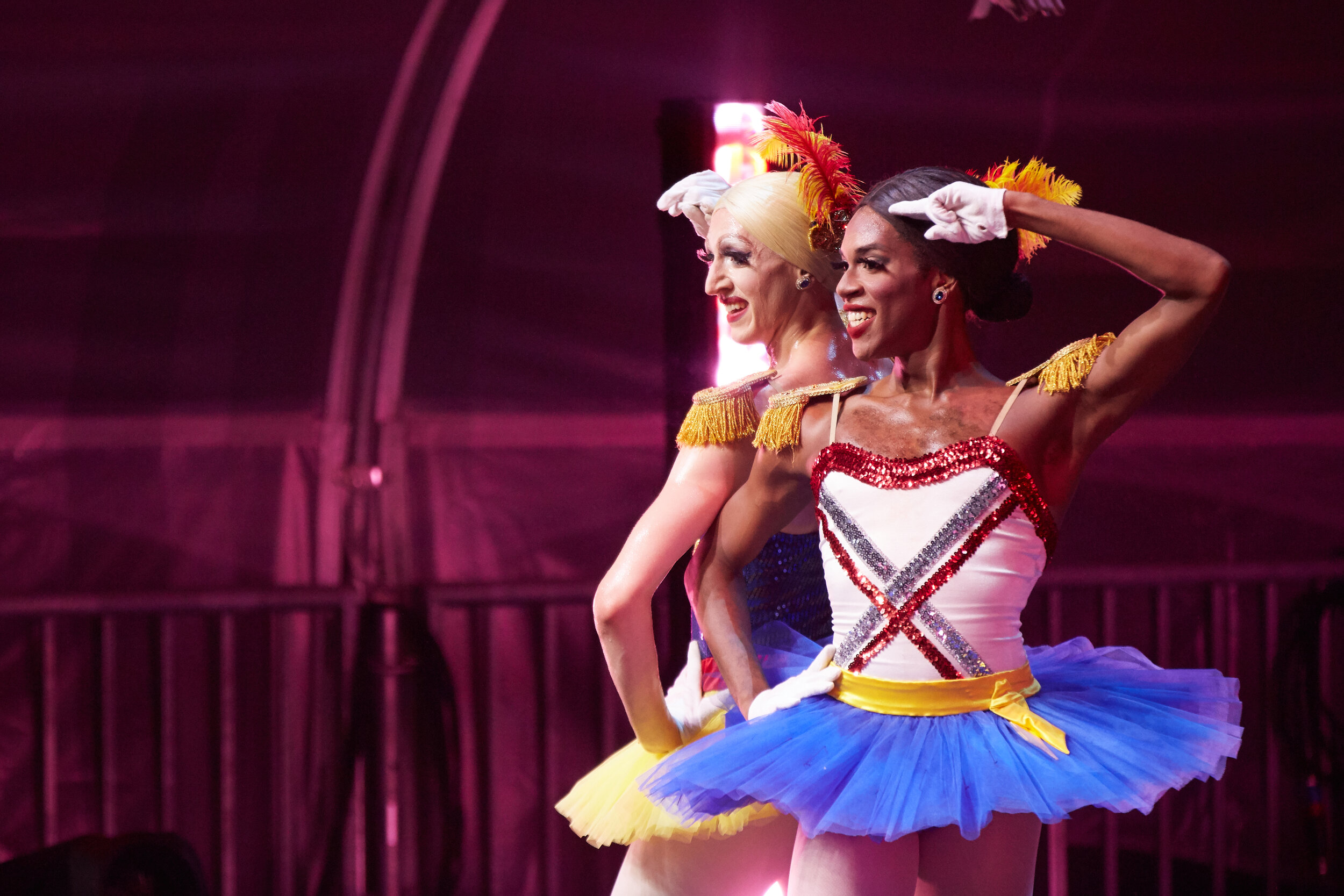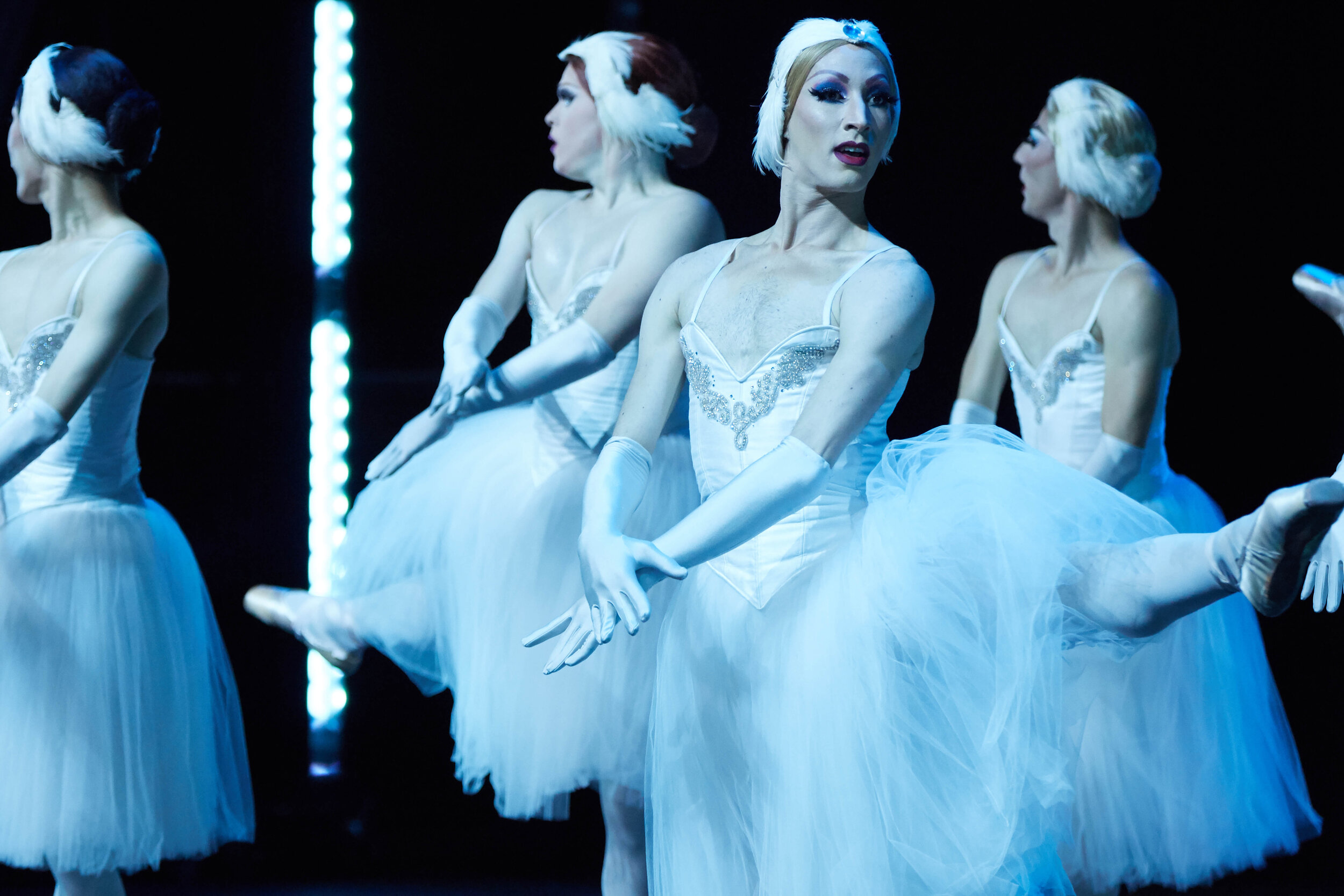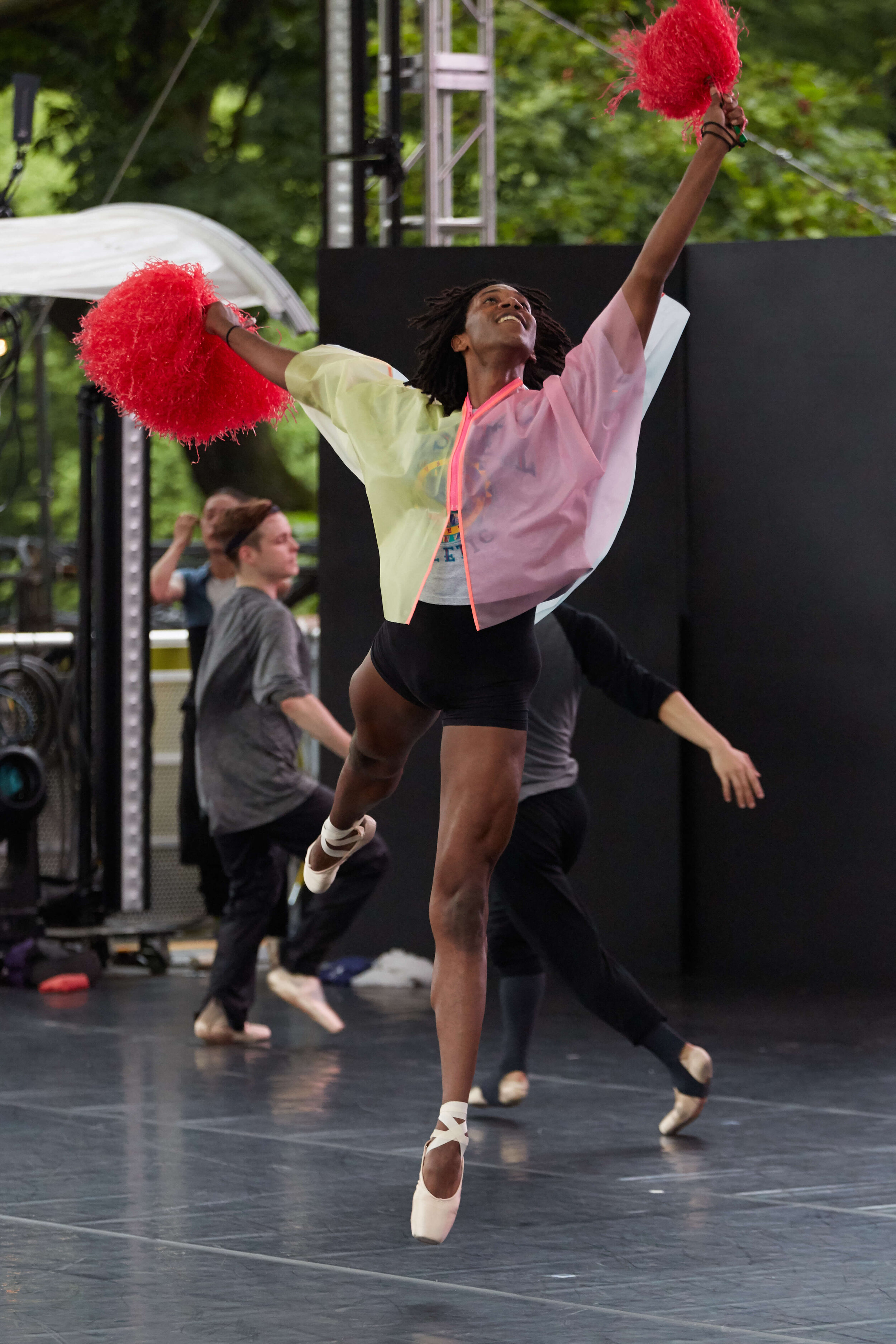


Synopsis:
This is the story of little boys who wanted to grow up to be ballerinas. And did. “Ballerina Boys” celebrates Les Ballets Trockadero de Monte Carlo--for 45 years home to some of the world’s most beautiful dancers, male ballerinas who have taken great risks to practice their dazzling version of ballet parody. A film full of beauty and fun, it seduces viewers into facing issues of gender, inclusion, and social justice. It interweaves a tour of the Carolinas (epicenter of efforts to walk back LGBTQ rights) with portraits of the dancers and the survival saga of the Company itself—a story that begins at the Stonewall Riots of 1969 and culminates in “Stars and Stripes Forever” at the Stonewall 50th Anniversary Celebration where fifteen drag queens in red, white, and blue tutus exult in a moment of unabashed patriotism.
What people are saying…

About The Film:
“Every time the curtain opens we represent progress for equality. We just do it dancing.”
–Kevin Garcia, Trockadero ballerina
“Ballerina Boys” is a portrait of an artistic institution that has brought to the world some of its most beautiful ballerinas. They are the men of Les Ballets Trockadero de Monte Carlo, a company of dancers who challenge the traditions of ballet art. This is a beautiful and funny film, yet it asks viewers to face issues of gender, inclusion, and social justice.
For forty-five years “The Trocks” have, in their fanatic adoration of classical ballet, overturned many of its strictures: that ballerinas are women, that ballet is highly serious, that it’s an endeavor for white people, and that it is meant only for high-brow audiences. And while the Trocks have messed with the rules, the one rule they have preserved is that ballet must be difficult. What they do just as well as female ballerinas is dance on pointe – an astonishing feat for their male bodies. These dancers – who mix mastery of many ballet styles with flawless comedy and acute satire – are changing the world one pirouette at a time.
“Ballerina Boys” travels with the Trocks on a bus tour to the Carolinas, the epicenter of efforts to walk back LGBTQ rights. On that trip, the dancers reveal how, by way of wrenching personal histories, they found their serendipitous pathways to the Company. The film interweaves this tour, the backstories of three main characters, and the survival story of the Company itself.
Inspired by the spontaneous kicklines that materialized during the Stonewall Riots in 1969, the Company was fueled by a spirit of defiance and creative exuberance unleashed by the blossoming gay rights movement. They named themselves Les Ballets Trockadero de Monte Carlo, an homage to Les Ballets Russes de Monte Carlo, a company that toured the country in the ‘50’s, introducing Americans in the heartland to classical Russian ballet. (As a matter of fact, an intrinsic aspect of the Trocks’ comedy is giving each dancer a preposterous fake-Russian stage name.) Their first performances took place in a run-down meeting hall on a plywood stage. Not content to be consigned to the fringe of the dance world, within a year they set out to tour the country. At a time when a man wearing women’s clothes violated the law in many states, the Trocks were forced to ask the question: where can we be safe?
Much to their amazement, their blend of expert technique and joyful “homage” caught on. By 1980, they were touring not only the country but the world. Then, like a tsunami, came AIDS. The 90’s were full of unimaginable heartbreak – as more than half the dancers died. But the company pushed forward, energized by grief and the conviction that male ballerinas had something important to offer the world. This was the moment when the Company should not have survived. But survive it did.
While many dance companies folded over the next 25 years, the Trocks continued touring and growing as an institution. Dancers mastered dozens of ballets, performing 150 shows a year. The days of grungy lofts are long gone; the Trocks now grace grand opera houses around the world.
The film’s half-century historical arc culminates with the Trocks’ gala performance at Central Park’s Stonewall 50th Anniversary Concert, where they danced “Stars and Stripes Forever.” Their version of George Balanchine’s 1958 military ballet features John Philip Sousa marches and—of course—a kickline. New York City cheered as fifteen drag queens in red, white, and blue tutus flaunted their stunning technique and exulted in a moment of unabashed patriotism. The world will love these heroes who do actually wear tights.
Changing the world one pirouette at a time
Directors’ Statement
“Ballerina Boys” delivers serious social justice themes wrapped in irresistible comedy and gorgeous dancing. This soulful portrait is full of entertainment that combines lowbrow fun with highbrow art. At the same time, all who search for hope and inspiration in the fight for equal treatment will be uplifted by these unlikely heroes. This theme is embodied in our choice to feature The Trocks’ version of Balanchine’s “Stars and Stripes.” As they perform “Stars and Stripes Forever,” the Trocks will be drag queens you come to love and respect, and who will incidentally sell you on a more inclusive vision of America.




































